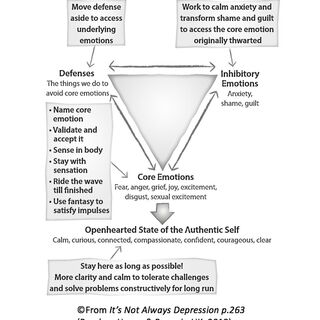Embarrassment
Why We Judge Others and Ourselves
Understanding emotions helps make sense of our biases.
Posted July 7, 2022 Reviewed by Vanessa Lancaster
Key points
- We can understand judgmental thoughts as emotional protection.
- Emotions like anxiety, shame, and guilt can fuel our judgments.
- Bringing awareness to the emotions that underlie our judgments helps us feel more connected and compassionate.
I’ll never forget the hilarity of my friend, "Kathleen," saying matter-of-factly at an intimate dinner party that her therapist accused her of having a superiority complex. As she reported this, she turned to us with a contemptuous look and said earnestly, “And, he’s the lowest!”
We erupted in laughter at the irony!
But I share this story not only for comic relief but as an example of the judgments we all make without any awareness of the emotions that drive our judgmental thoughts.
Here are some questions for both Kathleen and her therapist to consider and that I hope will get you curious too:
What emotions was the therapist experiencing just before his mind thought, “You have a superiority complex.” Was he feeling diminished by her words, tone of voice, or physical demeanor? Did Kathleen trigger any of his insecurities? Was he angry at her? Was he sad for her, perhaps assuming her arrogance wasn’t serving her? Was he triggered into feeling small or ashamed of himself for any reason?
And what about Kathleen? What emotions drove her hostile quip, “And he’s the lowest!” at dinner. Was she feeling hurt, angry, ashamed, or a combination of many emotions?
Emotional Awareness
There is nothing that helps a relationship more than emotional awareness. The willingness to own and be accountable for our emotions, anxieties, and defensive reactions, and to talk about them, leads to understanding, connection, compassion, and resolution of conflicts. Furthermore, through awareness of emotions, we gain the skills to slow down our reactivity so we can respond thoughtfully to others with compassion instead of judgments.
The Change Triangle

The Change Triangle is a universal and practical guide that shows how emotions work in the mind and body. Considering the epidemic levels of violence, anxiety, depression, and trauma in modern society, we should all learn about emotions and the Change Triangle in high school.
Among other things, this tool teaches us to name and tend to our core emotions. Instead of two people judging, accusing, and blaming each other, we can instead stop a negative inter-personal cycle and communicate on a deeper level. Noticing and validating the core emotions under our judgments cultivates a space for self-reflection and constructive communication.
Take a look at the Change Triangle graphics above and below. As we consciously make a choice to move aside our judgmental stance and tune into our body to notice the underlying emotions, we may discover anxiety, shame, guilt, or any of the seven core emotions at the bottom corner of the Change Triangle.

For example, Kathleen's therapist might have gotten out of his head and into his body to notice he was feeling diminished by her (shame). In lieu of accusing her of having a superiority complex, he might have calmed his own emotions and asked her, "What emotions are you experiencing?"
He could have helped Kathleen identify, name, and honor all the core and inhibitory emotions, like anger and shame, which she was experiencing at the moment with him. Together they could work to understand what the therapist was doing to trigger her stance of superiority (also a defense on the Change Triangle). Furthermore, he could have helped Irene discover any connections between what was happening in the present moment and how that might be resonating with past wounds.
This kind of deep work sets the stage for transformation. We can diminish our triggers, changing for the better how we think and feel. For example, had the therapist helped Irene become aware of the emotions underneath her words and conscious thoughts, she might find her agency and been better able to express herself in the future, saying something like, “the way you’re talking to me doesn’t feel good.”
Additionally, an emotional exploration provides a wonderful opportunity to process old traumas and childhood wounds. This would enable Irene to become less reliant on defenses and live a more open-hearted life with vitality and an increased sense of connection; that is, the sense of feeling connected to our emotional beings.
No doubt, the human mind will always make snap judgments. Still, all people and every relationship benefit from emotional awareness. By noticing the emotions that fuel our judgments, we have new knowledge to grow and connect authentically.


